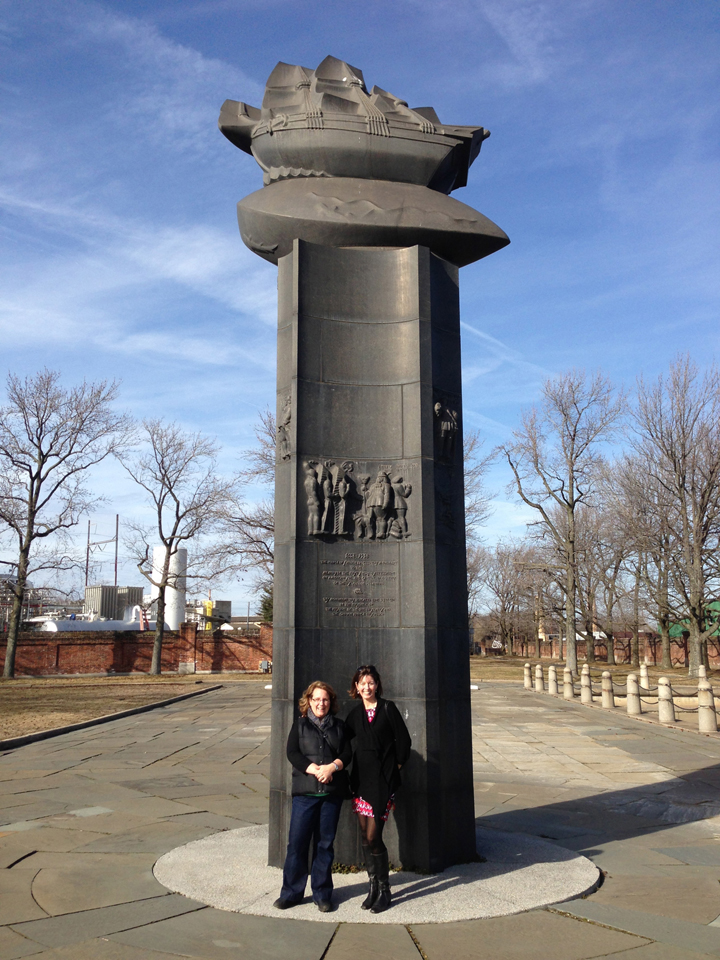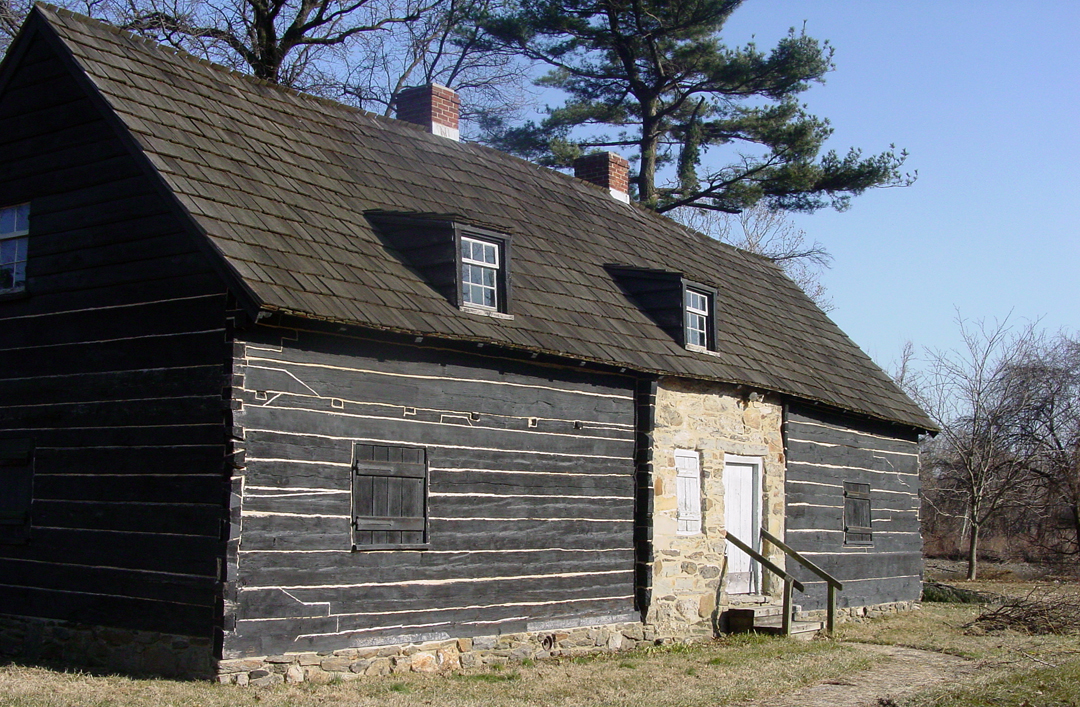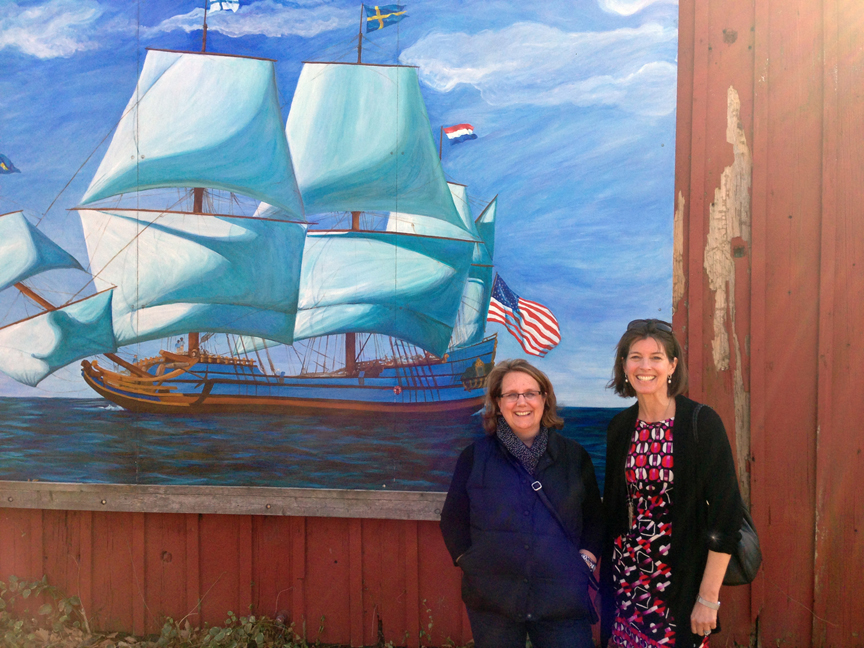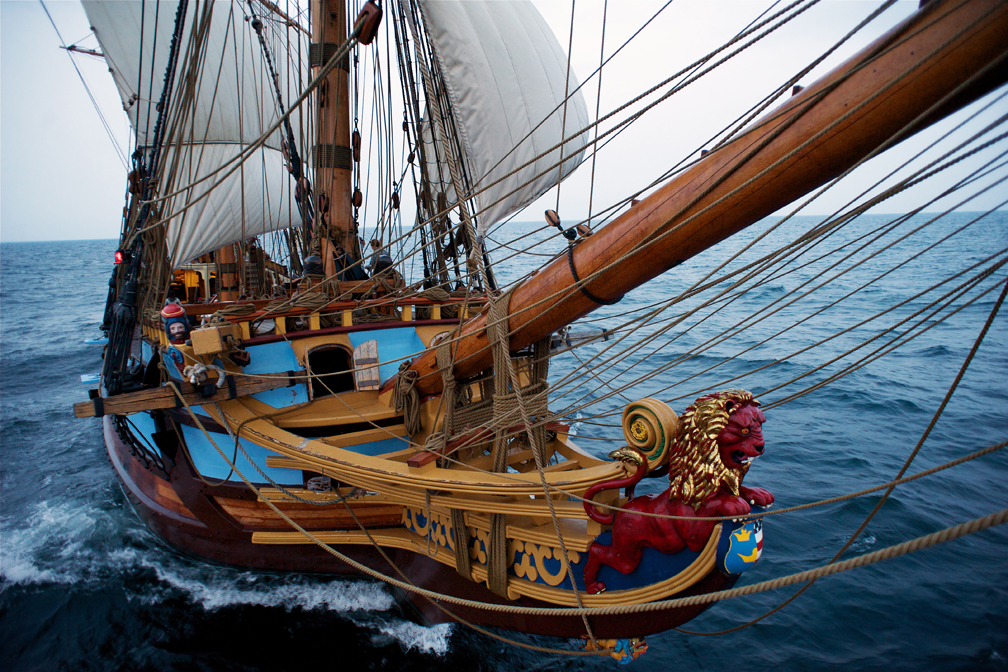Forgotten power
This year marks the 375th anniversary of New Sweden, the first permanent European settlement in the Delaware Valley.
-
 The granite Kalmar Nyckel monument created by Carl Milles in Fort Christina Park. Kajsa Haracz, working with PR for New Sweden Alliance (left) and Catherine Parsells, executive director Kalmar Nyckel in the foreground.
The granite Kalmar Nyckel monument created by Carl Milles in Fort Christina Park. Kajsa Haracz, working with PR for New Sweden Alliance (left) and Catherine Parsells, executive director Kalmar Nyckel in the foreground. -
-
Sweden’s colony in the Delaware valley is an oft-forgotten piece of the history of the New World. This year marks the 375th anniversary of this remarkable piece of Swedish and Finnish history.
New Sweden Alliance, a new nonprofit and collaborative organization, is bringing together ten Swedish- and Finnish-American heritage groups in Delaware, Pennsylvania and New Jersey to promote and celebrate the culture, history and contributions of the New Sweden Colony. We've earlier portrayed the successful albeit criticized first governor of the colony: 'New Sweden' 1638 - 1655 -
 The Morton Homestead, originally constructed around 1698, was home to John Morton’s (one of Pennsylvania’s signers of the Declaration of Independence) grandfather, Swedish-Finnish Mårten Mårtensson, and subsequent Morton family members. Photo: waymarking.com
The Morton Homestead, originally constructed around 1698, was home to John Morton’s (one of Pennsylvania’s signers of the Declaration of Independence) grandfather, Swedish-Finnish Mårten Mårtensson, and subsequent Morton family members. Photo: waymarking.com -
-
Alliance President Sheila Romine looks at the cooperation long term: "[NSA can] provide advantages for its members and those they serve beyond the current year, and we look forward to an ongoing association," she said in a recent statement.
In 2013, NSA members will focus on the 375th Anniversary Celebration events, which will last through the end of the year and include music, drama, cultural exhibits, educational programs and living history. Highlighting the year’s activities will be Jubilee Day, Saturday, May 11, when Their Majesties King Carl XVI Gustaf and Queen Silvia of Sweden and Speaker of the Parliament of Finland, Mr. Eero Heinäluoma, and his wife, Ms. Satu Siitonen-Heinäluoma, will visit Pennsylvania and Delaware. Events of the day include: a symposium entitled “Making It in America” at the Independence Seaport Museum in Philadelphia; a wreath-laying at the Finnish Monument in Chester, PA; a family fun day at Wilmington Riverfront’s Dravo Plaza, that will include a welcome ceremony for the visiting dignitaries with remarks by Wilmington Mayor Dennis Williams, music and activities for children, and an opportunity to watch the visitors sail on the tall ship Kalmar Nyckel; public ceremonies at Fort Christina Park in Wilmington with a procession to Old Swedes Church; and a Jubilee Day dinner at the Chase Center on Wilmington’s waterfront. Events and celebrations already started; For more info, see www.375th.org -
 Kajsa Haracz, working with PR for New Sweden Alliance (left) and Catherine Parsells, executive director Kalmar Nyckel in front of a mural of Kalmar Nyckel.
Kajsa Haracz, working with PR for New Sweden Alliance (left) and Catherine Parsells, executive director Kalmar Nyckel in front of a mural of Kalmar Nyckel. -
New Sweden
Perhaps inspired by the riches its rival nations garnered from overseas colonies, Sweden too, sought to extend its reach to America. In 1637, Swedish, Dutch and German stockholders formed the New Sweden Company to trade for furs and tobacco in North America. The first expedition sailed from Sweden with two ships, the Kalmar Nyckel and the Fogel Grip. The ships reached the Delaware Bay in March, 1638 and immediately began building the Fort Christina—to become the first permanent settlement of the Delaware Valley.
The history of the colony and the Swedish and Finnish heritage in America is preserved and commemorated through the Swedish Colonial Society in Philadelphia, PA. www.colonialswedes.com, which organizes the Annual New Sweden History Conference.
The Finnish contributions to the early colony is sometimes overlooked. This essay by Lawrence Backlund covers the 2012 New Sweden History Conference, which covered the vast contributions by the Finnish settlers. -
 The first expedition sailed from Sweden with two ships, the Kalmar Nyckel and the Fogel Grip. Above the Kalmar Nyckel replica of Wilmington, Delaware, at sea; one of the natural focal points as plans are established for the upcoming jubilee.
The first expedition sailed from Sweden with two ships, the Kalmar Nyckel and the Fogel Grip. Above the Kalmar Nyckel replica of Wilmington, Delaware, at sea; one of the natural focal points as plans are established for the upcoming jubilee. -
Forest Finns in the Old World and the new
By Lawrence Backlund
More than one hundred people learned about “The Forest Finns of Europe, New Sweden, and North America” at the Twelfth Annual New Sweden History Conference, held in Philadelphia at the American Swedish Historical Museum, on November 3, 2012. Not even the cold, humid and overcast weather in the wake of Hurricane Sandy could keep people away!
Inside the warm confines of the museum building, four presenters explored the topic.
Maud Wedin from Uppsala University spoke on the origins and culture of the Forest Finns, pointing out that they had come from Rautalampi Parish and elsewhere in northern Savolax. They entered mainly through the port of Gävle and settled uninhabited northern areas in communities located inland and westward to the Norwegian frontier. They practiced a form of “slash-and-burn” land clearing (svedjebruk), planted “forest rye,” and kept cattle for meat and dairy. They were renown for building “smoke houses” (rökstugan) and “smoke saunas" (rökbastun).
Wedin asserted that Swedish mining interests had persuaded the Swedish royal government to outlaw “slash-and-burn,” forcing the Forest Finns, who thus had become “criminals,” to consider migration to New Sweden.
Ronald Hendrickson, a descendant of the New Sweden colonists, recounted the story of the Forest Finns’ voyages across the Atlantic, starting with Lasse Svensson, who arrived on the Kalmar Nyckel’s second trip in 1640. He pointed out that when Johan Rising replaced Johann Printz, he was accompanied by one hundred Forest Finns on the Örn in 1654. This group included Mårten Mårtenson, whose descendant John Morton signed the Declaration of Independence.
The Forest Finns kept coming after Rising’s surrender to the Dutch, attracted by prospects of land and prosperity. Roughly 130 Forest Finns had arrived by the time the Dutch surrendered to the English. Hendrickson pointed out that not everyone survived the voyage. One ship, the Waghem, was lost at sea in 1664, with 140 Forest Finns on board.
According to Hendrickson, the Forest Finns settled in what is now Chester County, and in southern New Jersey, where they were on good terms with the Lenape Indians, and almost certainly introduced the notched log cabin wherever they went. They, like the other inhabitants of New Sweden, would be assimilated within generations, giving up their Savo dialect and taking up plough-based field agriculture.
The third presenter, Jan Myhrvold, a Norwegian researcher, introduced modern science into the story of the Forest Finns, specifically “markers” on the Y-DNA chromosomes (father lines) of current residents of the Norwegian-Swedish areas that the migrants had come from. He concluded that the Forest Finns represented a population with unique Y-DNA characteristics, making it possible to trace their background to northern Savolax in Finland.
Lu Ann De Cunzo, a University of Delaware anthropologist, turned her attention to what people ate in New Sweden, interactions with the Lenape and Susquehannocks, and contrasting attitudes regarding the land. She rightly referred to “Cultures of Agriculture” in this regard.
She argued that the New Sweden settlers, like other Europeans, thought of land as something malleable that could be shaped to satisfy human needs; that the land could be “imposed upon” or “improved” for this purpose. In contrast, the Indians—including the Lenape—believed the land possessed a benevolent spirit that shared crops with the people who worked the land. Foodstuffs were shared by the spirits rather than extracted by man.
When it came to points of contact between the New Sweden settlers and the Lenape, she noted that a mutual dependency arose between the Lenape, who “commericalized” maize production, perhaps using the metal tools and land clearing techniques of the newcomers (evidence of pre-New Sweden “slash-and-burn” is unclear) and the New Sweden settlers as a “market.”
The settlers ate the Indian maize, learning how to plant it; the Indians ate Swedish apples and planted turnips. Occasionally, there were problems. De Cunzo mentioned records of Lenape complaints that voracious Swedish pigs had eaten Lenape-planted turnips before they could be dug up—and stored in distinctive log cribs, perhaps.
Frank Eld, a leading expert on Finnish vernacular structures in North America, completed the presentations at the conference. Eld has spent years restoring the log structures built by Finnish homesteaders in Long Valley, Idaho, in the early 20th century, and has become adept in the use of tools records indicate had been used by the Forest Finns. Some still-standing structures provide evidence, including some in the Delaware Valley between Pennsylvania and New Jersey erected in the late 17th century.
These tools included the broadax, the awl, and the “varos,” a form of scriber used to shape logs so they “sat” on each other, held together with wooden pegs, and joined at the ends by either dovetailing or notching. These buildings, Eld argued, did not require chinking at all.
Later in the 18th century when this style was less common, Pehr Kalm noted the waste of fuel and lost heat in winter because logs were no longer tightly fit in some of the houses he saw.
Eld displayed examples of the tools and a cross-section of “squared” logs, so everyone could understand the concepts mentioned.
He proudly claimed: “If it fits, it’s Finnish!”
Afterward, the question-and-answer sessions were lively, the lunch was delicious, the coffee was strong and the atmosphere was stimulating.
Many thanks to the organizing committee, the sponsors, Kim-Eric Williams and Rebecca Wilson, who introduced the speakers, and especially to Ms. Tracey Beck, the museum’s executive director, who managed the event with energy and positive cheer.
For more info on the museum, see www.americanswedish.org -
-
-
